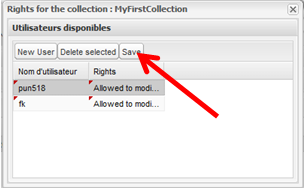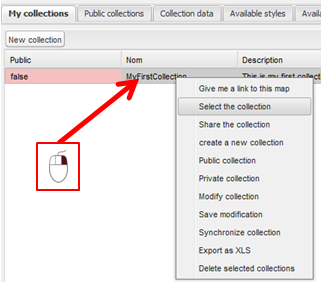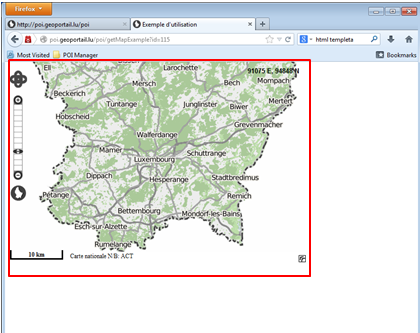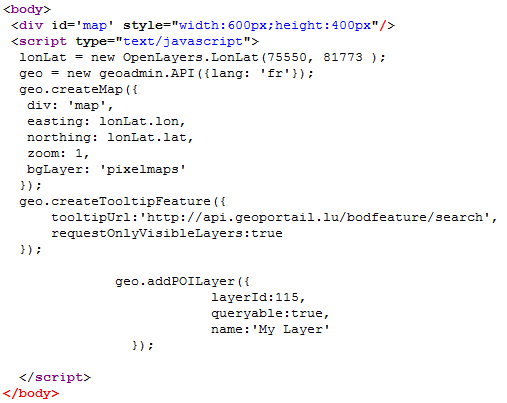Lëtzebuergesch (lu)
Français (fr)
Deutsch (de)
English (en)
Portals
Lëtzebuergesch (lu)
Français (fr)
Deutsch (de)
English (en)
Portals
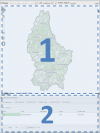 The graphical user interface of the POI Manager can logically be subdivided in a map and list section. The map allows browsing, visualizing, editing and selecting existing POIs or visualizing additional base map raster layer like aerial image, topographic or basic maps as well as a point layer containing street addresses.
The graphical user interface of the POI Manager can logically be subdivided in a map and list section. The map allows browsing, visualizing, editing and selecting existing POIs or visualizing additional base map raster layer like aerial image, topographic or basic maps as well as a point layer containing street addresses.
The second section contains the non geographical representation of the POIs in form of lists. Lists allow enabling to look for single POIs by name based filtering or sorting functions.
The map view and list view are interactive based on the fact that the selection of a POI in the map leads to the selection of the corresponding entry in the listed view of the collection.
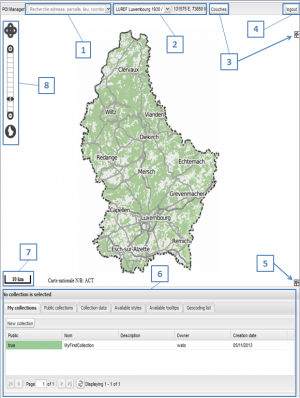
The map section allows browsing, visualizing, editing and selecting existing POIs or visualizing additional base map raster layer like aerial image, topographic or basic maps as well as a point layer containing street addresses. A detailed description of the map navigation can be found here. Next to the manual navigation the map supports searching by localities, coordinates or places, a detailed description to the search bar can be found here.
Generally the map contains a base map layer and the POIs of a selected collection, the base map should give additional support for orientation on the map. Several types of base maps can be displayed by selecting the accordingly layer at the table of layers available the “couches” button or the double arrowed button on the upper right corner of the map. (see point 3 of the GUI description). This table of layers contains next to the current available aerial image, the topographical map, a simplified base map and point layer representing the street address. The selected layer will be displayed by checking the accordingly check box next to the desired layer description.
On the lower right corner of the map you can find a second double arrowed button allowing to show or hide a small interactive overview map (see point 5 of the GUI description). The extent of the current map windows is represented by a red square, as both windows are interactively connected the extent on the overview map will change when the main map extent is changed and vice versa.
 The context menu of the map can be opened by clicking the right mouse button anywhere on the map. The context menu includes the following three options:
The context menu of the map can be opened by clicking the right mouse button anywhere on the map. The context menu includes the following three options:
Note: If no collection is selected at the “My collection” tab at the listed view section all buttons of the map context menu are disabled. You have to select a collection first to enable the collection related functions. The current selected collection can be check at the label Active collection: located on the left side of the bar separating the map from the list section.
A collection is a set of POIs created by users or accumulated by including public collections into a new one. Visually each collection is one list of POIs. All collections are managed in the lower part of the application. The management of collections is organized in tabs including the following tabs:

All collections that I can access are listed in this tab. Collections are visible to me if I am the creator of it or if a friend shares a collection with me. The tab menu bar includes only one New collection button allowing me to create new empty collections. The listing section contains 5 columns displaying attribute values for each collection. The listing navigation bar is located at the bottom of the page, it facilitates to navigate trough the pages of a list. Collections comprehend 5 attributes including :
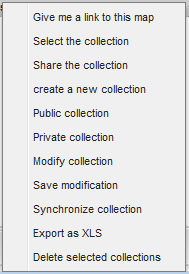 The context menu of a collection can be opened by a right mouse click on the collection entry. It contains all options that are available for those collection.
The context menu of a collection can be opened by a right mouse click on the collection entry. It contains all options that are available for those collection.
All collection that are accessible to the public are listed in this tab. Own collections can be shared with the public by using the Share this collection button at the My collections tab (see section My collection for further information). Public collections comprehend 5 attributes including :
 The context menu of a public collection can be opened by a right mouse click on the collection entry. It contains all options that are available for those collection.
The context menu of a public collection can be opened by a right mouse click on the collection entry. It contains all options that are available for those collection.
All POIs that are in the currently selected collection are listed in this tab. It includes several option as well as a text filter search function. The listing section contains 19 columns displaying attribute values for each POI. If you want to scroll through POI entries you can use the browsing toolbar located at the bottom of the page. Each column is headed with a filter field allowing to filter the entire collection by the appropriate field. The listing section contains the following 19 columns:

The toolbar of the collection data tab is located between the tab selection bar and the listing section. The toolbar contains five buttons, two sub menu buttons, one textual filter bar and one check box to switch between editing and none editing mode. Some toolbar elements maybe disabled depending on your current selected collection or if there are unsaved changes. The toolbar of the collection data includes the following functions:
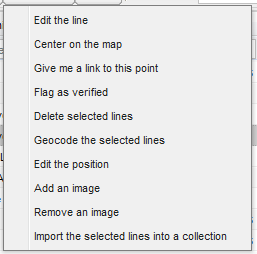 The context menu of POIs can be opened by hitting the right mouse button on a POI line or by using the POI actions button. The following options are available at the context menu:
The context menu of POIs can be opened by hitting the right mouse button on a POI line or by using the POI actions button. The following options are available at the context menu:
All available style for the selected collection are listed in this tab. The toolbar of the Available styles tab includes one sub menu and one button. The listing section contains five columns. The following attribute fields are defined for styles:
Note: Styles are connected to selections, this leads to the fact that styles cannot be accessed via other collections

The toolbar of Available styles tab is located between the tab bar and the list section. It contains one sub menu and one button. The following options are available at the toolbar:

The context menu of the available style of a collection can be opened by hit the right mouse button or the Styles actions button at the toolbar. The context menu of a style includes the following two options:
The symbol definition dialog can be accessed by hitting the Modify symbol button at the context menu of an existing style or by creating a new style with the New style button at the toolbar of the Available styles tab or the context menu of the listing section.
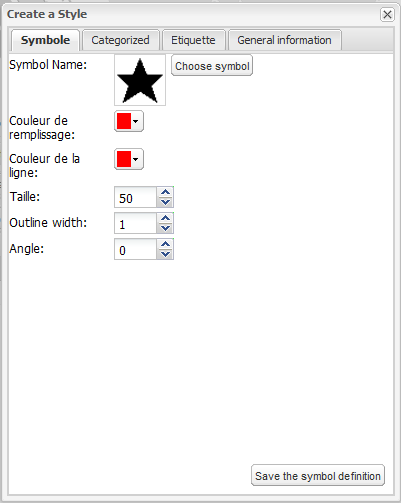 The dialog allows to define unique or categorized symbols as well as illustrating labels. For each task you find a specific tab at the dialog:
The dialog allows to define unique or categorized symbols as well as illustrating labels. For each task you find a specific tab at the dialog:
Tool tips are the small windows including additional information that pops up when users click on a POI. All available tool tips are listed at the Available tooltips tab. This tab is very similar to the Available style tab and includes a toolbar with a sub menu button and a listing section comprehending two columns. The following attribute fields are available:
The toolbar of the tool tip tab contains only one single sub menu button that is including the context menu of the selected tool tip. The context menu contains two options:
The history of all ongoing and completed geocoding processes is listed here. The Toolbar contains one button invoking a refreshment of the list. The listing section of this tab contains four columns:

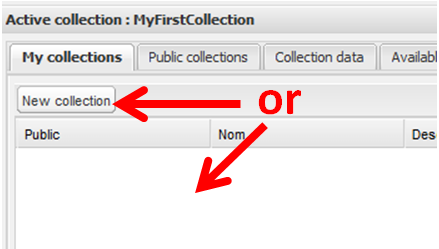
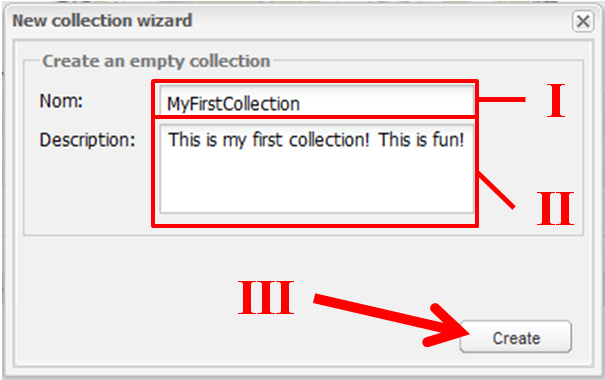

Note: The first attribute Public is set to false by default. This means that your collection is not public, only you can see it for the moment. Learn how to share your collection with friends or the public (here)
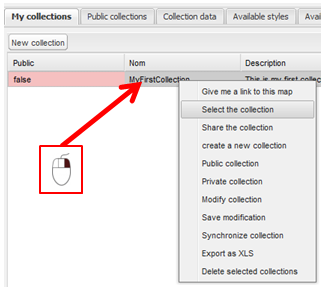


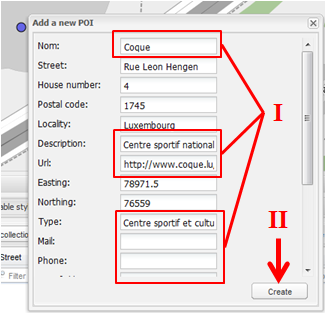 Note: All geocoding related attribute fields are automatically generated by the geocoding process
Note: All geocoding related attribute fields are automatically generated by the geocoding process
Note: To change a attribute value of a POI you can access the attribute window by clicking Edit this line at the context menu of the appropriate POI at the listing section



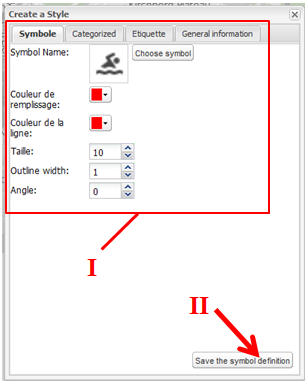 Note: You can only use only style for each collection. If you want to visualize different symbols for each POI or groups of POI you need to create a categorized symbol. (Hint: If you want to define single symbols for each POI you can categorize the symbols by their unique names). For detailed information please check the symbol definition dialog documentation (here)
Note: You can only use only style for each collection. If you want to visualize different symbols for each POI or groups of POI you need to create a categorized symbol. (Hint: If you want to define single symbols for each POI you can categorize the symbols by their unique names). For detailed information please check the symbol definition dialog documentation (here)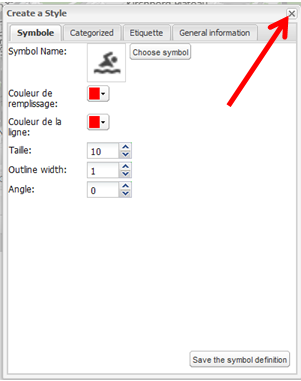

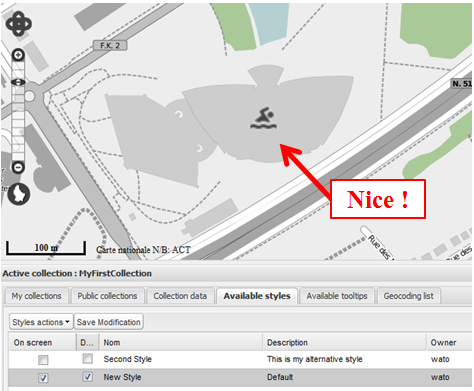
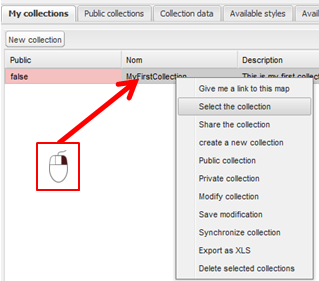



 Note: You can only define one tool tip for each collection. If you want to show POI related values like names, address, URL, phone numbers, etc. you need to add placeholders
Note: You can only define one tool tip for each collection. If you want to show POI related values like names, address, URL, phone numbers, etc. you need to add placeholders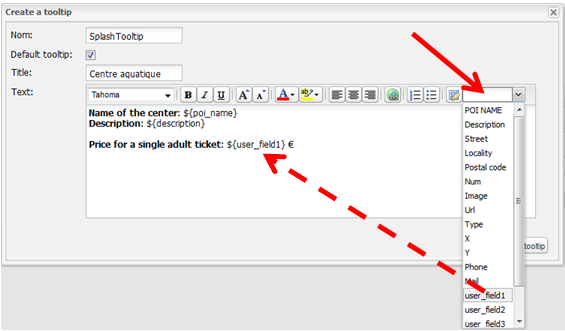
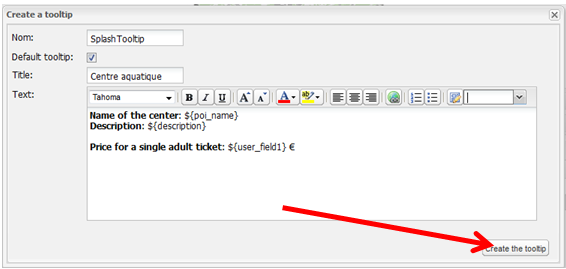
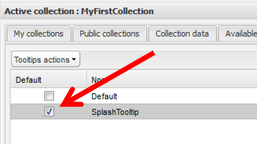 Note : You can only select one tool tip for each collection
Note : You can only select one tool tip for each collection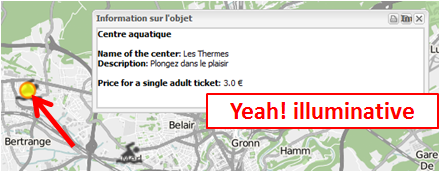
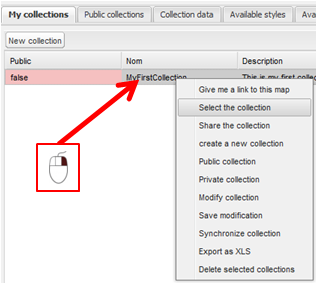



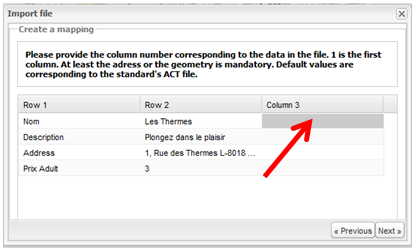 Hint: You can change the size of the window by click & drag the edge of the window, then you can enlarge the column width by click & drag the separation line at the header of the columns
Hint: You can change the size of the window by click & drag the edge of the window, then you can enlarge the column width by click & drag the separation line at the header of the columns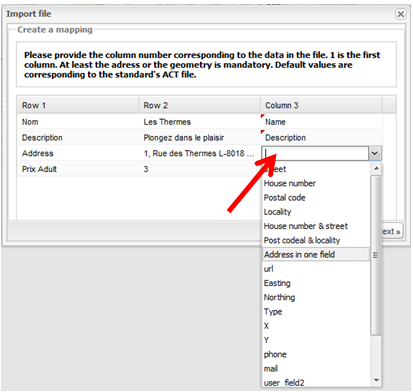

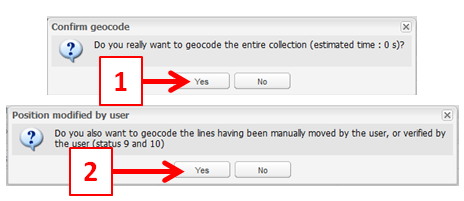



Note: Only complete addresses can be geocoded successfully. A complete address contains house number, street name and name of locality and optionally the postal code



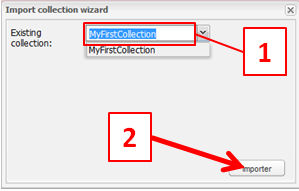
Note: You can import POIs not only by public collection but also from your own collection (copy from collection A to collection B) or from a collection shared with friends. The procedure is analogue
Note: Importing POIs means creating a copy, if you want to update your imported POIs later you have to hit the Synchronize collection button. Attention: This will override you current attribute values of the imported POIs

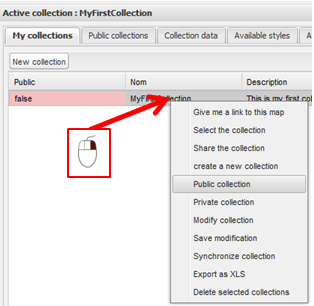 Note: If you want to stop sharing your collection you can choose the Private collection option at the same context menu
Note: If you want to stop sharing your collection you can choose the Private collection option at the same context menu 

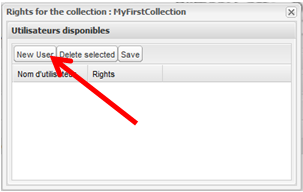
 Note: You can search for users by typing the first letters of the username, the list will dynamically changing and showing only the corresponding users
Note: You can search for users by typing the first letters of the username, the list will dynamically changing and showing only the corresponding users